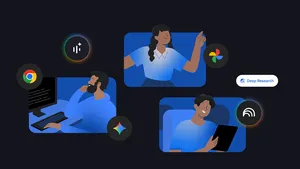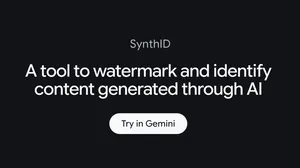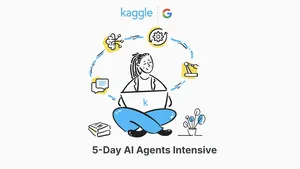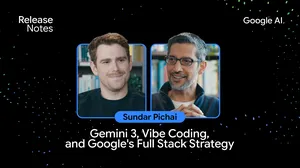The inside story of building NotebookLM

In mid 2022, a small team within Google Labs had a big idea: an app that would deploy our advanced language models to help people with research, thinking and writing, all grounded in sources they had on hand. Trawling through the docs and slides and links you deemed relevant to a project, it would helpfully find and synthesize the info you needed. Then known as Project Tailwind, it would be released the following July as NotebookLM.
“The first prototype was built in six weeks, with four to five people working on it part-time,” says Steven Johnson, who’s been on NotebookLM since those early days. “But the potential was clear from the beginning.” Two years later, that potential is being realized. NotebookLM has been one of our breakout AI successes, helping everyone from researchers trying to make sense of piles of papers, to college students corralling sources for a thesis and generating study guides.
“One of the reasons NotebookLM has been so successful is the simplicity of the creation process,” says Ani Mohan, group product manager on NotebookLM. “You have all these interesting sources in front of you and don't need to think very hard about what to make. You can just turn whatever's in front of you into something even more helpful for learning and understanding.”
Another reason? The team hasn’t stopped working to improve it. "Our team always says we’re aiming for the intersection point of the newly magical and the actually useful,” Steven says. "We look at both the amazing new things that are possible with AI, but also listen closely to our users to figure out what’s most helpful for them.”
The original version of NotebookLM — then known as “Project Tailwind” — when it was first announced at Google I/O in 2023.

The team has been soliciting feedback on NotebookLM since before launch, including with internal testing and a company-wide chat. Tens of thousands of monthly active users inside Google are using notebooks to help make sense of meeting transcriptions, manage their own notes and ideas and even parse through lengthy interviews when drafting stories.
“It's exciting to see so much NotebookLM usage inside the company,” Ani says. “It makes it a lot easier for us to quickly get feedback on new features and make sure we're building an increasingly valuable product for Googlers and the world at large.”
To that end, the team has also created in-app forms for users to share their experience and suggest features. When NotebookLM first launched, they even set up a Discord server to talk directly to people who were using it.
These conversations sparked the first new features the team would add, like the ability to save responses as notes, using Gemini to auto-suggest questions based on the sources and in-line citations. “It was clear to people that we were really listening to them,” Steven says. “Things they asked for would show up in our product roadmaps, making NotebookLM more useful to them and their specific needs.”
Google Labs & Gemini VP Josh Woodward demonstrating Audio Overviews at Google I/O 2024.

Last September, we launched Audio Overviews, which synthesize your sources into a podcast-style conversation between two AI “hosts.” And as users began listening on NotebookLM, we continued to listen to them.
“From the beginning, people were asking for Audio Overviews support in other languages,” Ani says. “We were initially only planning four new languages: Hindi, Japanese, Korean and Spanish. But in a very pleasant surprise — as often happens when we work with Google DeepMind — the research team discovered that the models work in way more languages. And so we went from four to 10 to 20 to 50 to 80.”
When the team added more than 80 languages to the feature this April, the number of Audio Overviews created each day doubled in just two weeks. And the number of total users doubled just a few weeks later, when the team launched the mobile app for NotebookLM just ahead of I/O — another key user request. “We're now meeting users where they spend a lot of time every day — we’re seeing more and more Audio Overviews created on mobile,” Ani says.
The team also recently introduced the ability to choose your own ideal length for Audio Overviews, a quick way to share notebooks publicly and today, the launch of Video Overviews.
“NotebookLM has gotten this far by listening to our users and evolving based on feedback,” says Steven. “Whether it's six Googlers chatting to our users in a forum, or dozens of people working to create a new feature, we’re excited to keep building a tool to help people understand anything. Keep the feedback coming!”






